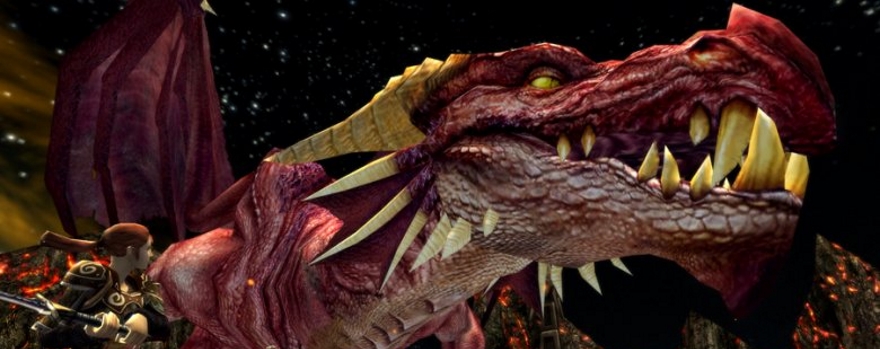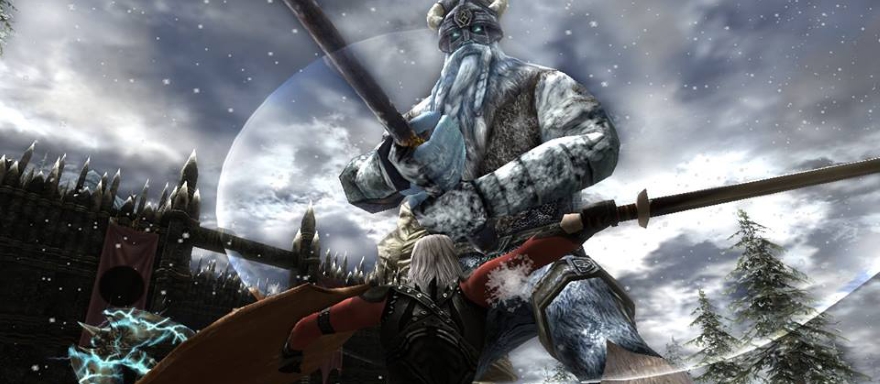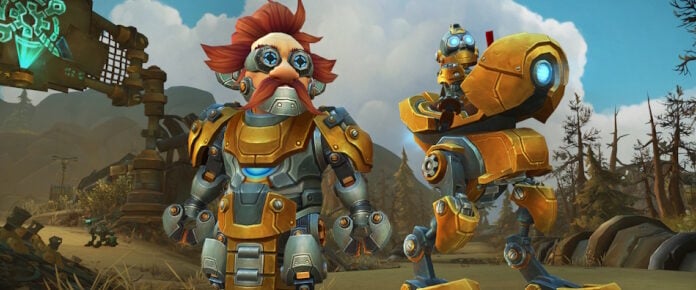
Ten years ago, I ventured into Stormreach with no more motivation than a longstanding desire to play D&D and an idle curiosity to see what an MMO version of this famous pen-and-paper RPG would be like. DDO was so very unlike World of Warcraft and its ilk that it took a large mental readjustment to get into the spirit of the game.
But adjust I did, and off and on I spent the next five years enjoying what this title had to offer. It was one of the first games that I helped to cover on Massively-that-was (yes, DDO had its own weekly column back in the day), and I looked forward to my weekly runs with a team of friends and colleagues. It’s bizarre to look back and realize that DDO is now a decade old and still gamely forging on, and in the spirit of this anniversary I wanted to offer up some of my favorite aspects of this unique title.
Without further ado, here are 10 things that I really loved about Dungeons and Dragons Online.
1. The dungeon master narration
Adapting tabletop D&D to the MMO format must have been a task of no small magnitude. For whatever reason — and I’m guessing it was the chance to work with this popular geek IP — Turbine tackled it and created a weird synthesis of PnP and MMO. There was obvious effort to retain the feel of the tabletop version, which is why DDO sports probably the only consistent narrator in MMORPGs.
I adored the DM narration. Instead of being immersion-breaking, the occasional booming descriptions, lines of dialogue, or notifications drew me in to each adventure. It was like getting rewarded with cutscenes without the action stopping. I even appreciated the effort to bring in guest dungeon masters, such as Gary Gygax, the creator of Magic: The Gathering.
(pause for full troll effect)
2. Dungeon-centric gameplay
OK, we all know that MMOs are no strangers to dungeon crawls. But DDO went all-in, especially in the early years, by offering very little to do other than dungeons. If you played the game, you were there to group up and run dungeons, a fact which kept the community focused on this content.
Oddly enough, I adored that. By using Stormreach as a hub for all of these instances, I felt like I was constantly going out on adventures with friends (old and new) instead of wandering across landscapes on my own. And these dungeons were hand-crafted, with each one sporting a different design, challenges, and look.
3. Party puzzles
DDO’s dungeons weren’t just about non-stop hack-and-slash combat. Sure, there was an awful lot of that, but you could see the effort was made to include a wider variety of activities, including environmental hazards to be navigated, NPCs with which to interact, and puzzles to be solved by your entire party. Figuring out how to solve these puzzles the first time around was a special treat, and something that I didn’t see again until The Secret World.
4. Action combat
The combat in this game wasn’t quite what we peg as “action combat” today, but it certainly was a lot more clicky and dynamic than the standard tab-targeting MMO of 2006. There were dice rolls going on for each combat move, friendly fire to worry about, and even positioning to consider. All I wanted to do, really, was to be a Bard with a huge repeater crossbow that could machine gun down bad guys while throwing out a few party spells now and then. Mission accomplished.
5. Lots of non-combat skills
Along with its dedication to giving more purpose to dungeons than being a slaughterhouse, DDO offered players a slew of skills that often went far beyond mere combat. Casting slow fall for a super-long drop was pure joy (it was gliding before Aion, Guild Wars 2, and Firefall made it the hip new thing), and I made sure to carefully use my search skills in new places. A great jump or swim skill could really help navigate obstacles, too.
6. Incredible build variety
Maybe there was too much build variety in this game to the point of players making broken builds, but I really appreciated having the chance to make the kind of character that I wanted, even if he or she or it wasn’t optimal. D&D’s class roster was out in force, with multi-classing and dragonmarks and all of the rest of the features that Turbine’s added over the years to customize and modify characters. And this is also one of the few MMOs that I know of that gives players incentive to rebirth their characters in exchange for a stronger build down the road.
7. A different take on fantasy
Initially I wasn’t sold on the Eberron campaign setting. It was newer and really different from classic D&D, and to be honest it probably hurt the game far more than helped. At least Turbine’s sandwiched in some Forgotten Realms over the past few years.
Still, Eberron was a nice departure from the yawn-inducing fantasy blandness that continues to run rampant through the MMO industry. Sure there were dragons and wizards, but there was also magictech devices, the Warforged race, and a city that looked like a fantasy world 200 years after the rest of the games left off. It took a little while to get used to it, but ultimately I grew to cherish the odd touches that this setting provided.
8. The health mechanic
DDO wasn’t completely hardcore (although there was a vibrant permadeath community the last time I played), but it did have some mechanics that made dungeon crawling a lot different than in other MMOs. For starters, health didn’t automatically regenerate and mob attacks didn’t always deduct from your hit points. When you got injured, it was a serious liability to the success of the run, so having a healer with precious few cure spells or finding a rest shrine for a rainy day was essential to making it out alive. It really does make a difference in your playstyle when you’re not seeing your red bar spring right back up after a fight.
9. The tight-knit community
I was always impressed with DDO’s community. It was just as prone to Chicken Littling at times as anywhere else, but for the most part this was a group of gamers that found a unique home and spent years dwelling in it. There was so much friendliness, willing assistance, and external discussion that I couldn’t help but get swept up with the enthusiasm of it all.
10. Pioneering a new business model
Did you somehow think that I was going to get through this list without mentioning how DDO spearheaded the widespread acceptance of free-to-play and other hybrid business models in the west? By being the first “big” MMO (but not truly the first) to jump on that, DDO enjoyed a huge boost to its population and publicity. Its continued existence proves that there is a place for F2P and that a change-up in business models can give flagging titles a second lease on life.
While I don’t think that DDO’s model is particularly great today, especially when compared to some other games, I was really entranced with it back in 2009 and enjoyed playing the game during that player renaissance. It’s the kind of situation we will likely never see again, and it happened to a game that deserved some extra love.
 Everyone likes a good list, and we are no different! Perfect Ten takes an MMO topic and divvies it up into 10 delicious, entertaining, and often informative segments for your snacking pleasure. Got a good idea for a list? Email us at justin@massivelyop.com or eliot@massivelyop.com with the subject line “Perfect Ten.”
Everyone likes a good list, and we are no different! Perfect Ten takes an MMO topic and divvies it up into 10 delicious, entertaining, and often informative segments for your snacking pleasure. Got a good idea for a list? Email us at justin@massivelyop.com or eliot@massivelyop.com with the subject line “Perfect Ten.”














